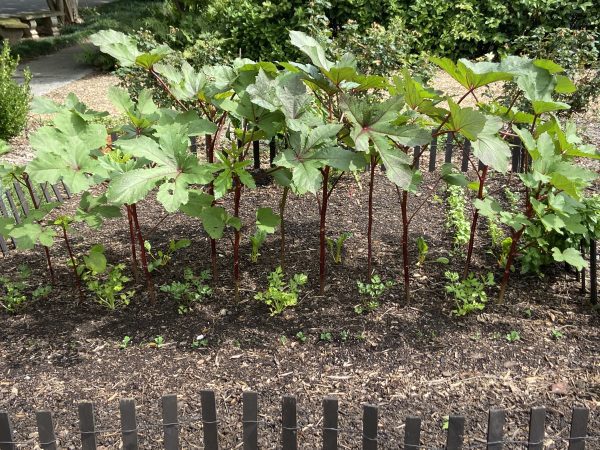Keeping a garden journal in 2021

The end of the year is a natural time for reflection, but does anyone really want to dwell on 2020? I imagine we’re all yearning for the chance to move forward, to put that dreadful year behind us, make a fresh start and take charge of our lives.
In 2021, my resolution is to keep a garden journal. I don’t aim to become an obsessive record-keeper like Thomas Jefferson. A weekly, or even seasonal, summary would be fine – a simple reminder of the varieties I plant and the date, along with general comments about their performance, the weather, and problems with pests or predation. Nothing fancy. Nothing onerous. It might be a notebook kept in a handy location. Or better yet, an app, since I always seem to have my phone at hand. Maybe one that would allow me to upload photos!
I feel the promise of better days ahead. I’m buoyed enough to reflect on the successes and failures of the past year. They’re a prelude to the shape I want my future journal to take.
Leaf lettuce and arugula sure did appreciate our cool, wet spring. I devote less than a quarter of my 8’X8’ plot to salad greens, but I estimate it produced at least 50 of those five-ounce plastic boxes (which I save for reuse) – the equivalent of $200 from two packs of seeds. What a return on investment! (Of course, that doesn’t include the value of my labor, which was considerable – I always triple wash to make sure I get all the slugs.) I wish I’d kept an accurate count.

A black-eyed susan in the author’s garden. Photo: Ruth Ann Grissom.
Summer was relatively mild with regular rains, so my green beans kept going and going and going. Emboldened, I sowed another row – can’t recall exactly when – but it didn’t amount to much. Unfortunately, the green beans took the space I needed for okra. I finally planted it after Labor Day. It was beautiful throughout the fall – blooming until a hard freeze finally took it in December – but produced enough pods for only two meals.
On a whim, I ordered some native wild strawberries. I didn’t expect much the first year, but all three plants bloomed and set tiny fruits, which the rabbits proceeded to eat. The plants sent out runners in every direction, threatening to take over my entire garden plot. And the shrub roses. And even the mint! I’m planning to move them to the backyard – they’d better serve as a ground cover for a shrub border.
As stay at home orders went into effect, the race was on to plant tomatoes. I should have known better. The ones I planted early never recovered from the cool, damp spring that made the lettuce so happy. It was a sad summer without my beloved Sungolds or Black Cherries. The Sweet 100s, Husky Reds and grape tomatoes eventually came on, but they’re merely serviceable, not as thrilling as tomatoes ought to be.
My basil went crazy, but my sage kept drowning.
My biggest frustration was the zucchini. Two robust plants produced exactly one misshapen specimen. Tiny ones withered when they were about the size of a gherkin. This can be a sign the flowers aren’t being pollinated, but I had approximately a gazillion bees nearby — honeybees, bumblebees, carpenter bees, sweat bees. I suspect they were too infatuated with the mountain mint and obedient plant to bother pollinating anything as pedestrian as a zucchini. I need a reminder to do a little research and see if other issues might be at play. I’m determined to grow a stinking zucchini – it’s humiliating to buy one at the grocery store when other gardeners are giving them away.
I’ve also failed at growing lettuce from seed in the fall. I sowed three packs over the course of a couple weeks and all of them failed to come up. I finally resorted to plants. Could it be our falls are just too warm for lettuce seed to germinate? The arugula came up, but it tried to bolt, even ‘Rocky,’ a wild variety that’s supposedly more heat tolerant.
I pause to touch wood and cross my fingers as I write this, but so far, the rabbits haven’t nibbled on my Swiss chard. I planted it and celery at the base of the okra, which provided them with some much-needed shade till the weather cooled off. It also probably insulated them a bit when temperatures dropped below freezing. Both have weathered nights in the 20s. It was the first time I’ve tried this technique.
I’d like to make sure I remember to repeat it.